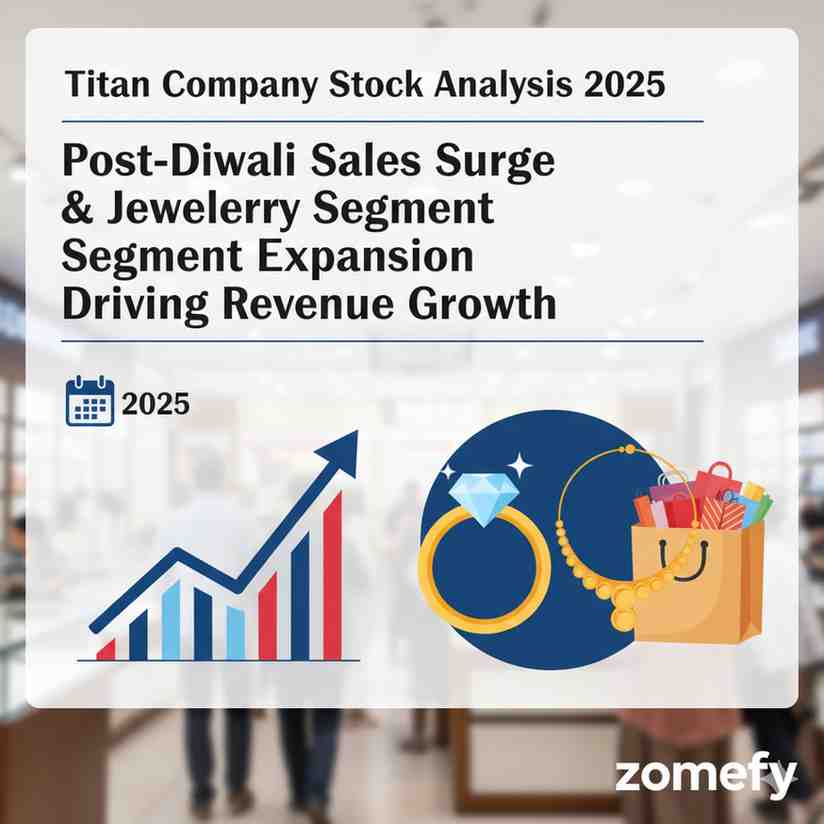Deglobalization and the New Multipolar World: Investment Strategies for Indian Markets in 2025
The global economic landscape in 2025 is witnessing a marked shift from decades of hyper-globalization to a phase often described as deglobalization, accompanied by the rise of a new multipolar wor...
Deglobalization and the New Multipolar World: Investment Strategies for Indian Markets in 2025
What You Can Do Next
- Read the full article for complete insights
- Save for later reference
- Share with others learning about this topic
Image not available
The global economic landscape in 2025 is witnessing a marked shift from decades of hyper-globalization to a phase often described as deglobalization, accompanied by the rise of a new multipolar world order. For Indian investors and financial professionals, understanding these macroeconomic and geopolitical shifts is critical to navigating the Indian markets effectively. Deglobalization is characterized by disrupted supply chains, increased geopolitical tensions, and a strategic pivot towards self-reliance, all of which are reshaping investment flows and corporate strategies globally. Simultaneously, India’s unique position—with its demographic dividend, consumption-driven growth, and policy emphasis on initiatives like 'Make in India' and 'Aatmanirbhar Bharat'—offers both challenges and opportunities. This article explores the implications of these global trends on Indian equities, sectors, and investment strategies, providing actionable insights tailored for Indian retail investors and professionals. It integrates specific data, comparative analysis, and sectoral outlooks to equip readers with practical tools to optimize portfolios amid this evolving environment.
Understanding Deglobalization and the Multipolar World
Deglobalization refers to the gradual reduction in global economic interdependence, driven by geopolitical tensions, trade barriers, and supply chain disruptions. This trend has been accelerated by recent global events such as the COVID-19 pandemic, rising nationalism, and strategic decoupling between major powers like the US and China. The new multipolar world is characterized by the emergence of multiple economic and geopolitical centers, including the US, China, the EU, India, and others, each pursuing distinct economic policies and alliances. For Indian markets, this means navigating a complex global environment where trade linkages are restructured, and foreign capital flows become more selective.
Key impacts of deglobalization on India include: - Supply chain realignments favoring domestic manufacturing under the 'Make in India' and 'Aatmanirbhar Bharat' initiatives. - Increased tariff risks and trade barriers impacting export-oriented sectors like IT, pharmaceuticals, and textiles. - Volatility in foreign institutional investments (FII) influenced by global monetary policies and currency fluctuations.
Aspect | Globalized World | Deglobalized World |
|---|---|---|
| Trade | Free flow with optimized supply chains | Trade barriers, reshoring, disrupted supply chains |
| Investment | High cross-border FDI and portfolio flows | Reduced foreign investments, selective capital allocation |
| Geopolitical Relations | Multilateral cooperation and alliances | Increased nationalism and geopolitical tensions |
| Technology | Collaborative innovation | Restricted knowledge exchange, tech decoupling |
This environment demands that Indian investors recalibrate strategies by focusing on companies with strong domestic moats, resilient supply chains, and adaptability to shifting trade dynamics.
Drivers of Deglobalization Impacting Indian Markets
Several drivers are shaping the deglobalization trend and influencing Indian markets:
- Geopolitical Tensions: India-China border disputes and US-China trade wars have led to cautious foreign investments and supply chain diversification away from China, benefiting Indian manufacturers.
- Policy Shifts: India's policy emphasis on 'Aatmanirbhar Bharat' encourages domestic production, reducing import dependency and fostering sectors like electronics, defense, and pharmaceuticals.
- Global Monetary Environment: Rising interest rates in the US and Europe have led to capital outflows from emerging markets, including India, causing volatility in equity and currency markets.
- Supply Chain Restructuring: Global companies are relocating manufacturing bases closer to consumer markets or to politically stable countries, creating opportunities for Indian exporters and domestic manufacturers.
Driver | Effect on Indian Market | Example |
|---|---|---|
| Geopolitical Tensions | Reduced FDI from China, increased domestic focus | Shift in electronics manufacturing to India |
| Policy Shifts | Boost to domestic manufacturing, import substitution | 'Make in India' incentives for defense sector |
| Global Monetary Environment | Equity market volatility, currency fluctuations | Rupee depreciation vs USD in 2025 |
| Supply Chain Restructuring | New export opportunities, sectoral growth | Pharmaceutical exports to US/EU |
Understanding these drivers helps investors identify sectors poised for growth and those facing headwinds, enabling better portfolio allocation decisions.
Sectoral Implications and Opportunities in Indian Markets
The deglobalization trend has uneven impacts across Indian sectors, creating a landscape of winners and laggards. Retail investors and professionals should focus on sectors that benefit from domestic demand, government support, and supply chain realignments.
Sector | Impact of Deglobalization | Investment Opportunities | Risks |
|---|---|---|---|
| Information Technology (IT) | Export revenue pressure due to slower global demand | Focus on domestic digital transformation, AI adoption | Dependency on US/EU markets, currency risk |
| Pharmaceuticals | Supply chain diversification boosts exports | API manufacturing, generic drug exports | Regulatory risks, pricing pressures |
| Manufacturing (Auto, Electronics) | ‘Make in India’ accelerates domestic production | Electric vehicles, semiconductor fabs | High capex, global supply chain bottlenecks |
| Consumer Goods | Rising domestic consumption with limited imports | Premiumisation, rural penetration | Inflation impact on discretionary spending |
| Banking & Financial Services | Credit growth supported by domestic demand | Retail loans, digital payments growth | Asset quality risks, interest rate volatility |
### Case Study: Auto Sector
The recent GST revisions cutting 5–10% across auto categories, along with RBI's consideration to reduce risk weights on auto loans, have strengthened demand, particularly in passenger vehicles and two-wheelers. Premium segment growth is expected to outpace commercial vehicles, which require a longer recovery horizon. Investors could consider leading companies like Maruti Suzuki, Tata Motors, and Bajaj Auto, which are also investing heavily in EV technology.
Company | Market Cap (₹ Cr) | P/E Ratio | ROE (%) | Debt/Equity |
|---|---|---|---|---|
| Maruti Suzuki | 2,30,000 | 35.2 | 18.5 | 0.20 |
| Tata Motors | 1,15,000 | 28.3 | 10.7 | 0.75 |
| Bajaj Auto | 1,80,000 | 31.4 | 21.2 | 0.05 |
Investors need to weigh sector-specific risks like regulatory changes, raw material price volatility, and global demand cycles while capitalizing on sectoral tailwinds driven by deglobalization.
Comparative Performance of Export-Driven vs Domestic-Focused Sectors
Deglobalization has created a divergence in performance between export-dependent and domestically oriented sectors. Export-driven sectors such as IT and textiles are facing headwinds from subdued global demand and currency fluctuations. Conversely, sectors like FMCG, banking, and domestic manufacturing are benefiting from rising local consumption and government stimulus.
Sector | 1-Year Return (%) | 3-Year CAGR (%) | Key Drivers |
|---|---|---|---|
| IT Services | 5.8 | 9.2 | Global demand slowdown, currency headwinds |
| Pharmaceuticals | 12.3 | 14.5 | API export growth, supply chain diversification |
| FMCG | 18.7 | 16.8 | Rural demand, premium product adoption |
| Banking | 15.2 | 13.5 | Credit growth, digital payments expansion |
| Textiles | 4.1 | 7.8 | Export demand weakness, raw material costs |
This divergence suggests that portfolio rebalancing towards domestic-oriented sectors may offer better risk-adjusted returns in the current environment. Investors should also consider quality parameters such as return on equity (ROE), debt levels, and earnings growth consistency when selecting stocks.
Investment Strategies for Indian Markets in 2025
In the context of deglobalization and a multipolar world, Indian investors should adopt nuanced strategies that balance growth potential with risk management. The following actionable strategies are recommended:
1. Focus on Quality and Resilience: Prioritize companies with strong balance sheets, low debt, and robust cash flows that can withstand tariff shocks and supply chain disruptions.
2. Sectoral Diversification: Tilt portfolios towards sectors benefiting from domestic demand and government initiatives, such as manufacturing, consumer staples, and financial services.
3. Thematic Investing: Consider themes like digital transformation, renewable energy, and domestic manufacturing that align with structural shifts.
4. Currency and Inflation Hedging: Use instruments or funds that provide partial hedging against currency depreciation and inflationary pressures.
5. Mutual Fund Selection: Opt for funds with demonstrated expertise in navigating volatile markets and those investing in quality mid- and large-cap companies.
Mutual Fund | 1-Year Return (%) | 3-Year Return (%) | Expense Ratio (%) | AUM (₹ Cr) |
|---|---|---|---|---|
| HDFC Top 100 Fund | 12.5 | 15.2 | 1.05 | 25,430 |
| ICICI Prudential Bluechip | 11.8 | 14.7 | 1.15 | 32,150 |
| Aditya Birla Sun Life Frontline Equity | 13.0 | 16.0 | 1.10 | 22,500 |
### Risk Considerations
- Geopolitical Risk: Continued India-China tensions and global trade uncertainties can cause market volatility. - Inflationary Pressures: Rising input costs may squeeze corporate margins. - Monetary Policy Shifts: RBI’s policy changes in response to global inflation could impact interest rates and equity valuations.
### Portfolio Construction Example
| Asset Class | Suggested Allocation (%) | Rationale | |-------------------|--------------------------|--------------------------------------------| | Large-Cap Equities| 50 | Stability and liquidity | | Mid-Cap Equities | 20 | Higher growth potential | | Debt Instruments | 20 | Income and risk mitigation | | Gold & Others | 10 | Hedge against inflation and currency risks |
This balanced approach helps manage volatility while capturing growth opportunities in the evolving global-economic context.
Comparative Analysis of Investment Vehicles
Choosing the right investment vehicle is crucial under the current market dynamics. Here is a comparison of key options:
Investment Vehicle | Return Potential | Risk Level | Liquidity | Suitability |
|---|---|---|---|---|
| Direct Equity | High | High | High | Experienced investors with risk tolerance |
| Equity Mutual Funds | Moderate to High | Moderate | High | Retail investors seeking diversification |
| Debt Mutual Funds | Low to Moderate | Low to Moderate | Moderate to High | Risk-averse investors for stable income |
| Gold | Moderate | Moderate | High | Hedge against inflation and currency risk |
| Fixed Deposits | Low | Low | Low to Moderate | Conservative investors |
Investors should align their choice with their risk appetite, investment horizon, and market outlook, balancing growth with capital preservation.
Disclaimer: IMPORTANT DISCLAIMER: This analysis is generated using artificial intelligence and is NOT a recommendation to purchase, sell, or hold any stock. This analysis is for informational and educational purposes only. Past performance does not guarantee future results. Please consult with a qualified financial advisor before making any investment decisions. The author and platform are not responsible for any investment losses.
Continue Your Investment Journey
Discover more insights that match your interests

Coal India Stock Analysis 2025: Surging on Delivery Volumes & Power Demand Revival Amid Crude-Led Inflation Relief
Coal India Limited (CIL), the world’s largest coal producer and a Maharatna PSU under the Ministry of Coal, remains a cornerstone of India’s energy infrastructure.

Understanding Unit Economics: Why Zomato's ₹50 Discount Costs Them ₹80
Deep dive into Zomato's unit economics revealing how a ₹50 customer discount actually costs ₹80. Learn about CAC, LTV, contribution margins, and what it means for startup investing.

India’s Commodity Crunch 2025: Decoding Gold, Crude, and Agri Price Trends for Strategic Portfolios
India’s commodity markets are at a pivotal juncture in 2025, shaped by global economic shifts, domestic policy dynamics, and evolving investor behavior.

Titan Company Stock Analysis 2025: Post-Diwali Sales Surge & Jewellery Segment Expansion Driving Revenue Growth
Titan Company Limited, a flagship entity in India's consumer discretionary sector, has demonstrated robust growth momentum entering 2025-26, fueled by a strong post-Diwali sales surge and strategic...
Explore More Insights
Continue your financial education journey
